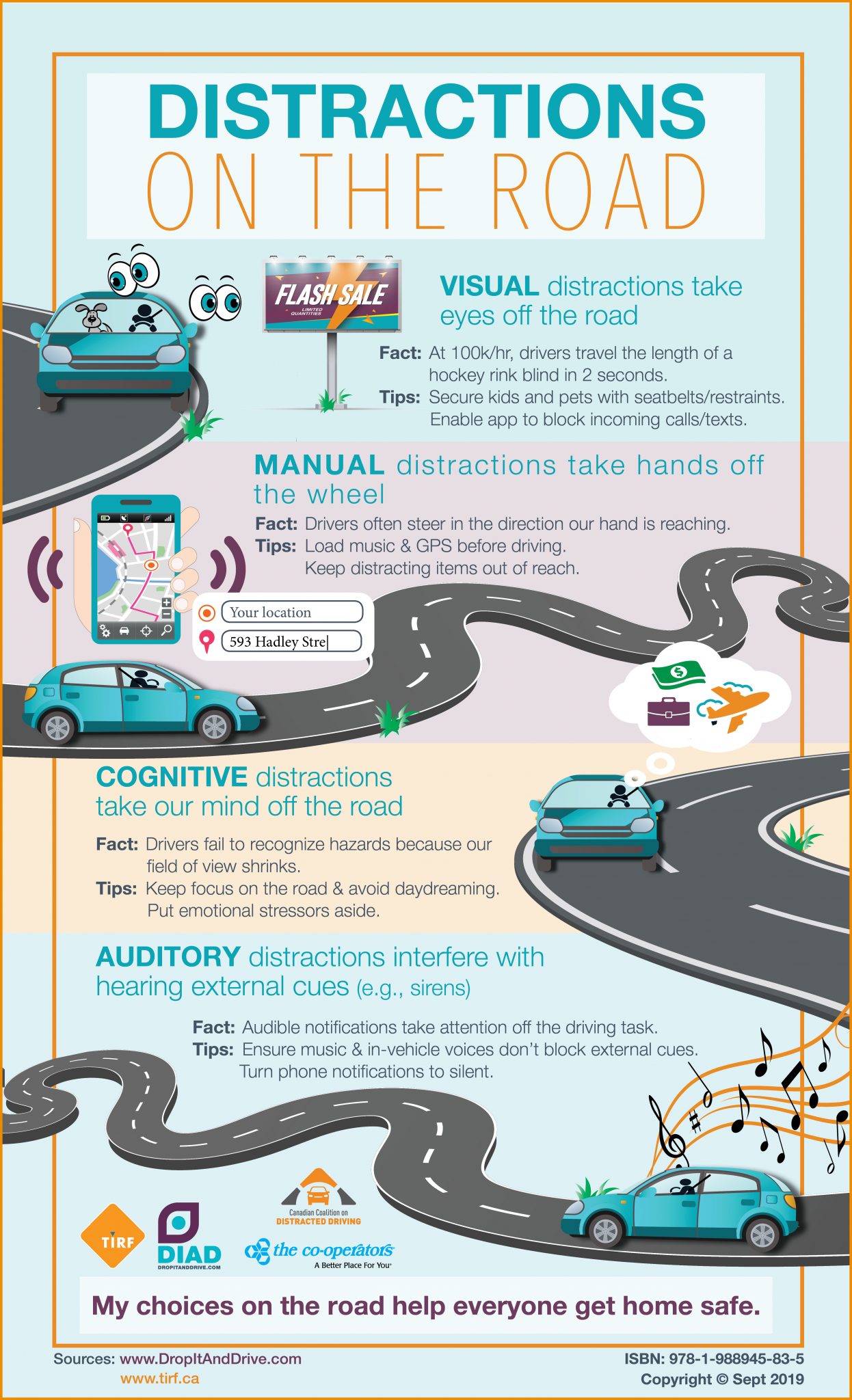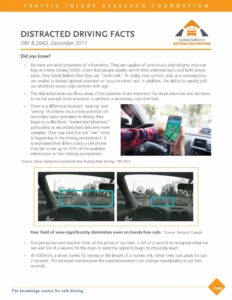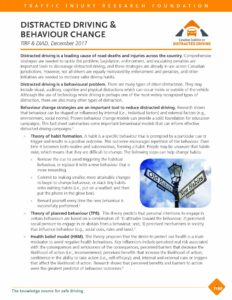Note: Cross-posted with TIRF’s Drop It And Drive® blog to increase ease of access.
Most of us have experienced a near-miss or a close call on the road; but have you ever stopped to consider what factors were the difference between avoiding a collision versus being involved in one?
Often, the difference between these two events is measured in fractions of seconds or millimetres. In those heart-stopping moments, driver attention and perception-reaction times, as well as the choices made by each person on the road, are key determinants of outcomes. Those infinitesimal measurements can alter the balance between the prevention of fatalities and injuries, or damage to one or more vehicles, and the profound consequences of a crash.
Most collisions are the result of driver error or condition and entirely preventable. Distraction is a contributing factor in 25% or 1 in 4 fatal crashes. More than 350 people were killed in distraction-related road crashes in Canada in 2015. Non-distracted drivers or non-distracted road users were more likely to die in these collisions.
Distractions in the vehicle have been around almost as long as we have had cars. In 1956, select Chrysler models even included a record turntable that fit into the dashboard. Today, distractions are more likely to involve adjusting a playlist, navigation and voice-activated features on phones or in vehicles as opposed to setting a needle on a turntable, but the risks remain.
Knowledge of the effects of distraction on the driving task and the risks it poses has evolved substantially in the last decade. Educating drivers and other road users about the risks to encourage behaviour change and safe choices is now a top priority. Important facts that can help road users make safe choices and minimize distractions include:
- Driving IS a divided attention task. It involves manual, visual/auditory and cognitive activities. Drivers continually scan the road environment for road signs and other environmental cues such as brake lights ahead. Their brain processes this information to anticipate changes or identify potential hazards, and decisions prompt manual actions to control the vehicle accordingly.
- Perception and reaction time. At the prime of our lives, our perception and reaction time is 3/4 of a second to identify a risk and 3/4 of a second to BEGIN a physical reaction such as lifting your foot off the accelerator and preparing to brake.
- Speed and distance travelled in just 2 seconds. Vehicles travelling 100km/h cover 52 metres or the length of a hockey rink from red line to red line in 2 seconds.
When drivers choose to engage in other distracting tasks that are visual, manual, or cognitive in ADDITION to driving, they are in fact reducing their ability to respond to the ever-changing road environment where a few seconds means a world of difference. They fail to see or recognize hazards, they are slower to respond to them, and they fail to reduce their speed fast enough, which means crashes are more severe and more difficult to avoid.
And they will spend a lifetime wishing they could take it back.
This new infographic, released by the Canadian Coalition on Distracted Driving in partnership with The Co-operators, demonstrates the four categories of distraction, provides tips on how to reduce risk and can be posted in workplaces, schools, and community centres to help raise awareness.
#MySafeRoadHome blog authors: Robyn Robertson, President & CEO and Karen Bowman, Director, Drop It And Drive® (DIAD) program, have worked collaboratively, drawing from Robyn’s breadth of knowledge on the topic combined with Karen’s blogging background and experience leading the DIAD program since 2010. Robyn is the author of TIRF’s knowledge translation model, is well-versed in implementation strategies and operational practices across several sectors. To date, the DIAD program has been delivered to more than 60,000 youth and workers across North America.
References:
ITWorld, A brief history of distracted driving. December 2013 https://www.itworld.com/article/2822874/130453-A-brief-history-of-distracted-driving.html#slide2
Distracted Driving Facts, Canadian Coalition on Distracted Driving, December 2017 https://tirf.ca/TIRFCAD17K
“How Long Does It Take to Stop?” Methodological Analysis of Driver Perception-Brake Times, Transportation Human Factors 2(3):195-216 · September 2000, Pages 195-216 | Published online: 15 Jun 2010, https://doi.org/10.1207/STHF0203_1
Related topics:







